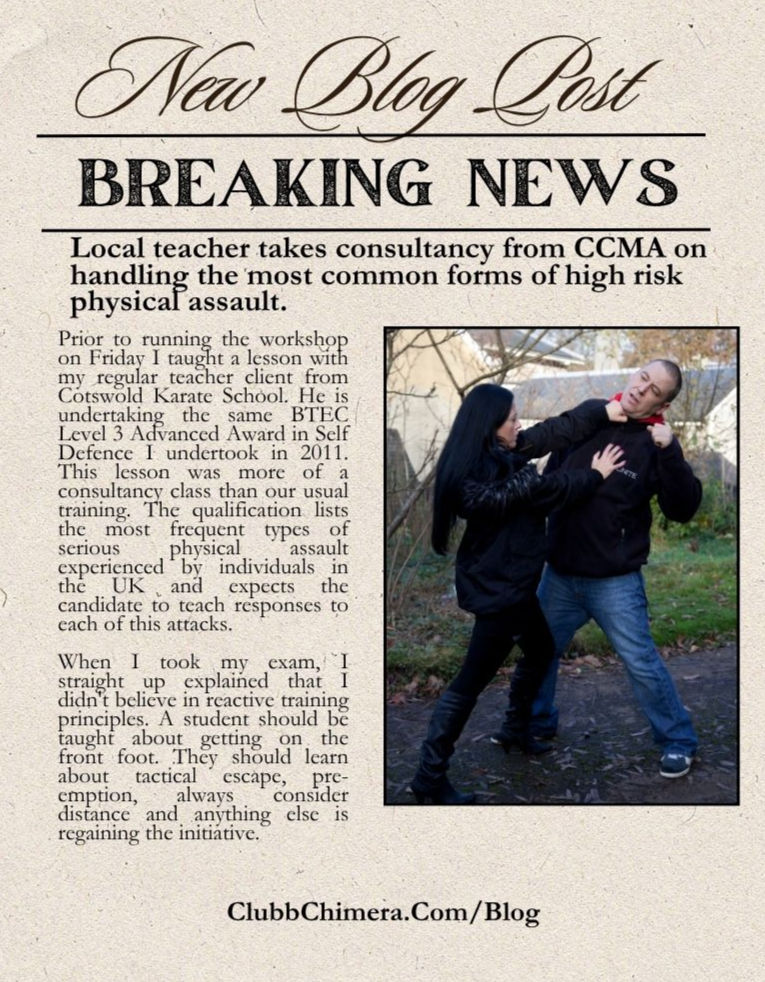Countering Common Forms of Assault
- jamie03066
- Jul 1
- 2 min read

27.06.2025
Prior to running the workshop on Friday I taught a lesson with my regular teacher client from Cotswold Karate School. He is undertaking the same BTEC Level 3 Advanced Award in Self Defence I undertook in 2011. This lesson was more of a consultancy class than our usual training. The qualification lists the most frequent types of serious physical assault experienced by individuals in the UK and expects the candidate to teach responses to each of this attacks.
From memory, the assaults were:
A slap or punch to the face
A rear choke or strangle
A front choke or strangle
A headlock
A bite
When I took my exam, I straight up explained that I didn't believe in reactive training principles. A student should be taught about getting on the front foot. They should learn about tactical escape, pre-emption, always consider distance and anything else is regaining the initiative.
Keeping tactics very simple backed up by principles, we decided on straight hand palm strikes and circling to the back as the main responses with some adaptive support tools.
Strikes thrown with intent rarely provide a person time to block or even parry, at least not at the beginning stage. Therefore, it makes sense to teach the principles of the fence, which provides a valuable tactic for pre-emptive actions and not waiting for this type of attack. In this case the pre-emptive action will be a straight palm as it is a high risk situation. Should the attacker throw a strike took quickly and the attack gives the defender distance, especially if we are looking at a medium risk slap, then the defender should take advantage of the distance created and look for an exit whilst putting the fence up in readiness for a secondary attack.
Chokes, both front and rear, assume that pre-emption has not been possible and the victim now needs to regain the initiative. The defender should adapt it, preferably striking through the choke or put pressure onto the arms and strike over the top.
Rear choke defence needs to trained at the early stages of the attack with priorities placed on getting the chin into the natural air pocket provided in the crook of an attacker's arm. They then should look to circle to the back.
Similarly the side headlock should be drilled with the defender immediately circling to the back when they feel the beginning of the headlock. Other support tools can be brought into play if the headlock is sunk in, but the emphasis should always be in defending early.
Bites are a special case. It all depends when and how a defender is being bitten of course, but the main thing to remember is not to pull away but clinch in tight in a smothering action.













Comments